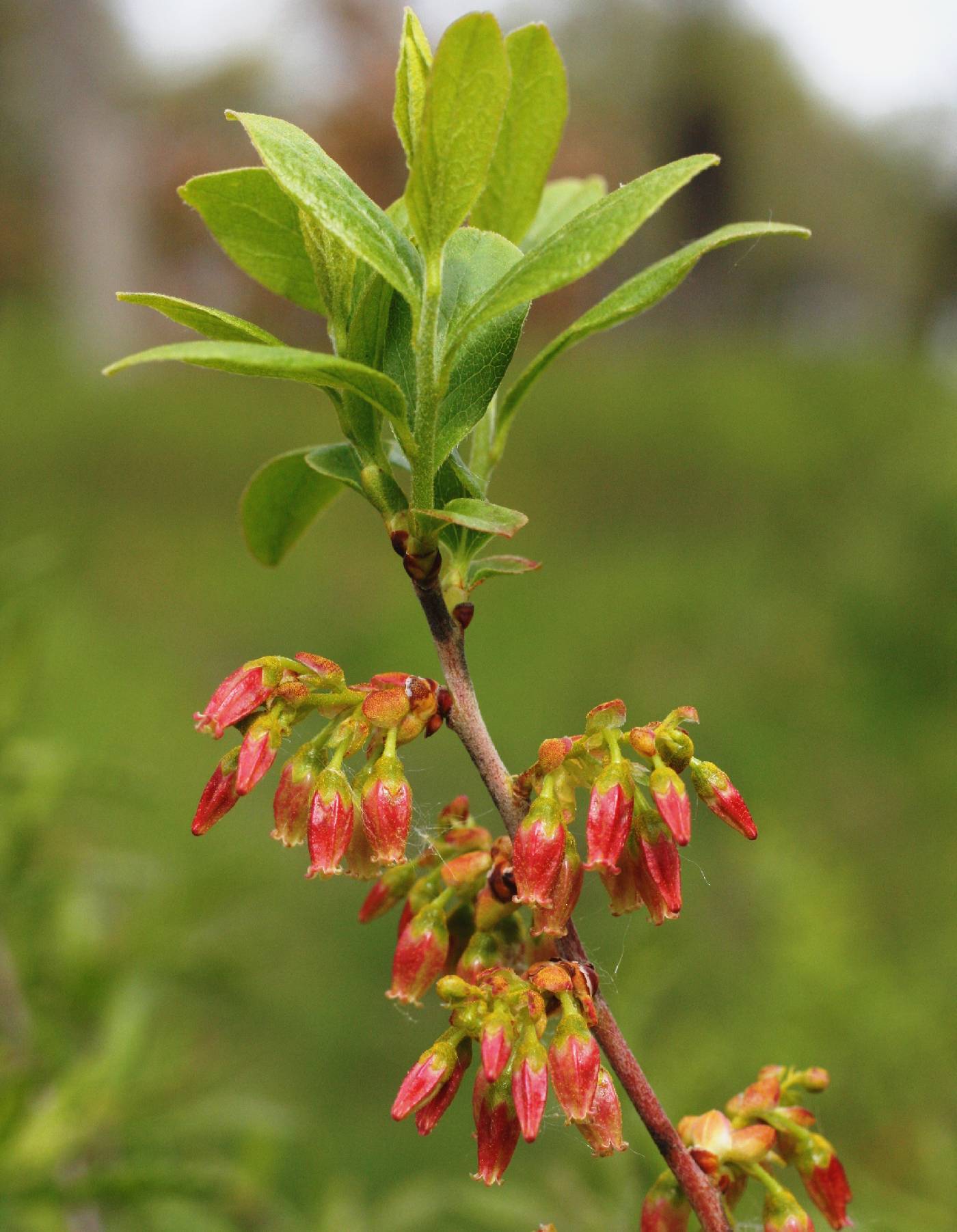
|
Family: Ericaceae |
Subshrubs or shrubs. Stems erect; twigs glabrous or hairy, sometimes glandular. Leaves deciduous (G. brachycera persistent); blade obovate or ovate to oblong or oblanceolate, membranous or coriaceous, margins entire or crenate (sometimes serrulate) [glandular-crenate], plane or revolute, glabrous or hairy; venation reticulodromous. Inflorescences axillary or terminal racemes, 2-8-flowered, sometimes flowers solitary. Flowers: sepals (4-)5, sometimes vestigial, connate basally, deltate (straight or inflexed in fruit); petals 4-5, connate for nearly their entire lengths, greenish white or white to pink or orange to red, corolla urceolate, campanulate, or campanulate-conic, lobes much shorter than tube; stamens 10, included, (slightly shorter than corolla); filaments straight, flattened, glabrous or pilose, without spurs; anthers without awns, dehiscent through narrowly oblong, terminal pores; pistil 5-10-carpellate; ovary inferior, 5- or 10-locular; stigma capitate. Fruits drupaceous, ovoid to globose, fleshy. Seeds (pyrenes) 10, ellipsoid; testa stony, papillose (smooth in G. ursina). x = 12. The genus Gaylussacia was organized into three sections by H. Sleumer (1967). The sections are: sect. Vitis-idaea (species 1) with coriaceous, persistent leaves lacking resinous dots; sect. Gaylussacia (species 2-5) with deciduous leaves with some stipitate-glandular hairs; and sect. Decamerium (species 6-10) with deciduous leaves and sessile glands. Molecular investigation by J. W. Floyd (2002) suggested these sections may not be entirely natural, and that the origin of the genus may be in North America, despite the greater diversity in South America.
Fls 5-merous; hypanthium short, obconic; cal 5-lobed, persistent; cor tubular or conic, scarcely if at all constricted above, the short lobes erect or outcurved; stamens 10, included; anthers with 2 pollen-sacs, each sac prolonged into a terminal tubule; ovary inferior, 10-locellar, ripening into a fleshy drupe with 10 seed-like nutlets, edible but of poor quality; freely branched shrubs, often colonial, commonly conspicuously glandular, with small, alternate, deciduous or evergreen lvs and white or pinkish fls in lateral, bracteate racemes. 50, New World. Gleason, Henry A. & Cronquist, Arthur J. 1991. Manual of vascular plants of northeastern United States and adjacent Canada. lxxv + 910 pp. ©The New York Botanical Garden. All rights reserved. Used by permission. |
This project was made possible in part by the Institute of Museum and Library Services [MG-70-19-0057-19].
Powered by Symbiota



